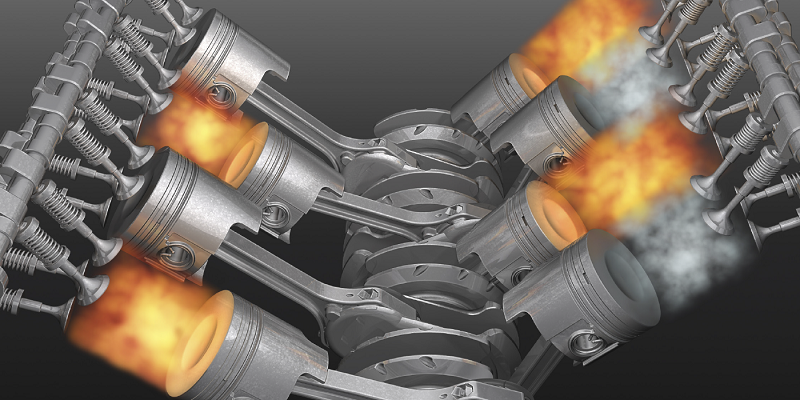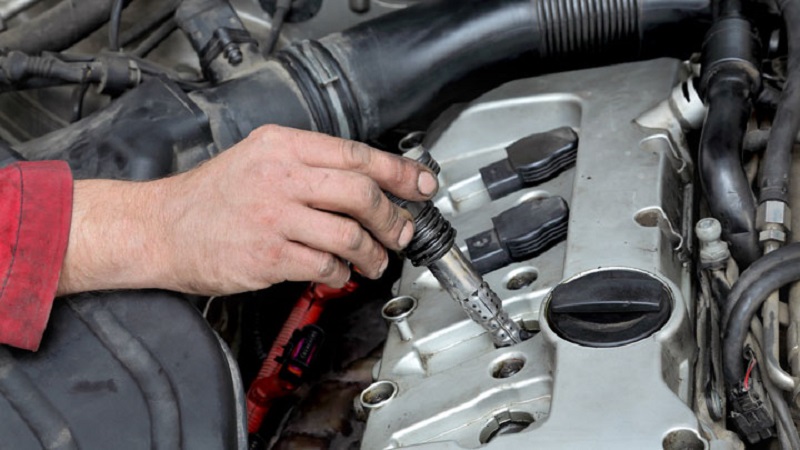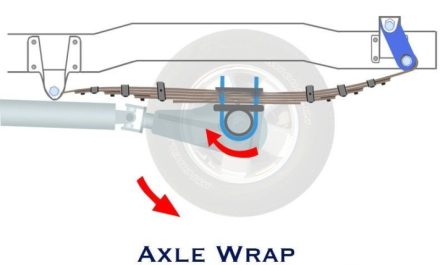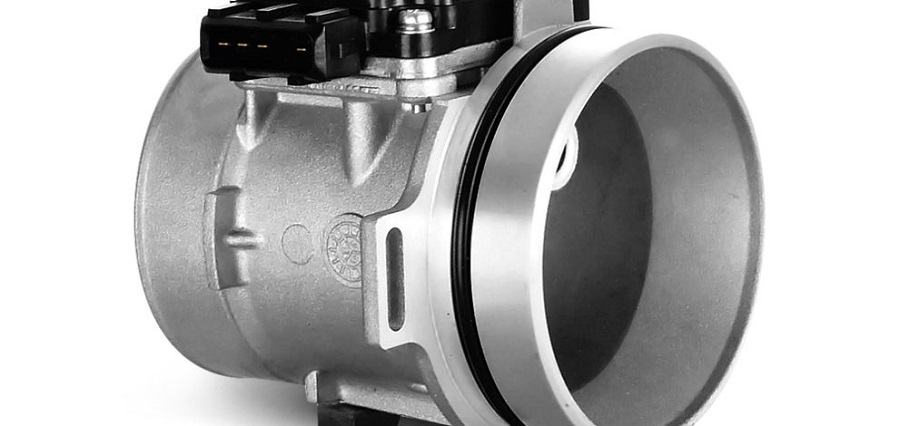If left unchecked, an Engine Misfire is a serious problem that can cause a lot of other issues. It happens when one or more of the engine’s cylinders fail to ignite, impairing your car’s smooth running. This article explores the causes, signs, diagnosis, and available repairs for Engine Misfire, providing a thorough overview for comprehending and handling this typical car issue.

What is an Engine Misfire?
When the combustion process in one or more cylinders is not carried out as intended, an engine misfires. An incomplete or incorrect combustion occurs in the cylinder, which results in a variety of performance problems rather than a smooth and controlled burn of fuel and air. Numerous things might cause a misfire, and if it isn’t fixed, the consequences can range from little performance issues to serious engine damage.
Read more: 2025 Range Rover Vogue Autobiography Specs & Review
Causes of Engine Misfire:
Ignition System Issues:
Spark Plugs: In the cylinder, the air-fuel mixture must be ignited by spark plugs. Misfires can occur when spark plugs that are worn out or clogged are unable to ignite a powerful spark.
Ignition Coils: The spark plugs receive the required electrical charge from these coils. A misfire may occur if a coil malfunctions.
- Fuel System Problems:
Fuel Injectors: A precise amount of fuel is sprayed into the combustion chamber using fuel injectors. A misfire may result from the fuel mixture becoming overly rich or lean due to its failure or clogging.
Fuel Pump: An inadequate fuel flow from a malfunctioning fuel pump might cause misfires because not enough fuel is getting to the engine.
- Air Intake Issues:
Air Filter: Airflow into the engine can be restricted by a filthy or clogged air filter, which can cause an imbalance in the air-fuel combination and misfires.
Mass Air Flow Sensor: The amount of air entering the engine is measured by this sensor. If it malfunctions, inaccurate air-fuel mixture calculations may result, which could result in misfires.
- Engine Mechanical Problems:
Compression Issues: An engine with low compression may not be able to burn fuel properly. Low compression can be caused by blown head gaskets, damaged valves, or worn piston rings.
Timing Issues: For the engine to run properly, the timing of the intake and exhaust valves is essential. Misfires can result from a disruption in this equilibrium caused by a timing belt or chain issue.
- Vacuum Leaks:
Hoses and Gaskets: Vacuum leaks have the potential to throw off the air-fuel ratio and cause misfires by letting too much air into the engine. There are several locations where leaks can happen, such as vacuum hoses and intake manifold gaskets.
- Sensor Failures:
Oxygen Sensors: By keeping an eye on the exhaust gases, these sensors assist the engine in regulating the air-fuel mixture. A malfunctioning oxygen sensor may cause misfires and incorrect mixture changes.
Engine Control Unit (ECU): Based on sensor inputs, the ECU controls a number of engine operations. Misfires can result from improper fuel and ignition timing brought on by a defective ECU.
Read more: Hummer H2 | Overview, Design, Specification and Price
Symptoms of an Engine Misfire
Rough Idle: An unsteady or harsh idle is one of the most obvious signs of a misfire. When the engine is idling, it can shake or vibrate more than usual.
Loss of Power: Significant loss of power and acceleration can result from a misfire. When you step on the accelerator, the engine might not respond as well or its overall performance can drop.
Increased Fuel Consumption: Misfires can result in an engine that struggles to sustain performance, using more fuel as a result of the engine running inefficiently.
Check Engine Light: When the engine control unit detects a misfire, the Check Engine Light (CEL) frequently activates. The computer system of the car can have a misfire-related diagnostic trouble code (DTC) saved in it.
Unusual Engine Sounds: The engine may make popping or sputtering noises, which are signs that one or more cylinders’ combustion is not happening correctly.
Exhaust Smoke: Exhaust white or black smoke may be an indication of a misfire. While black smoke may indicate an overly rich fuel mixture, white smoke may indicate coolant entering the combustion chamber.

Diagnosing an Engine Misfire:
OBD-II Scanner: To begin, read any diagnostic issue codes that are saved in the ECU using an OBD-II scanner. Misfire-related codes, such as P0301 for cylinder 1 misfire, can reveal which cylinder is faulty.
Visual Inspection Look for wear or damage on the spark plugs, ignition coils, and wiring, among other parts of the ignition system. Check for obstructions or leaks in the fuel system’s constituent parts, such as the filters and fuel injectors.
Compression Test: To determine whether the cylinders have low compression, run a compression test. This test aids in the diagnosis of mechanical problems like worn valve rings or piston rings.
Fuel Pressure Test: To make sure the fuel pump is giving the engine the right amount of fuel, use a fuel pressure gauge. Low fuel pressure may be a sign of a fuel filter or pump issue.
Vacuum Leak Test: Use a smoke machine or a hissing sound detector to test for vacuum leaks. Examining the intake manifold, gaskets, and hoses might help locate vacuum leaks.
Sensor Testing: Check the accuracy of sensors by testing them, such as the oxygen and mass air flow sensors. Adjusting the air-fuel combination incorrectly can result from malfunctioning sensors.
How to Fix Engine Misfire
Replacing Spark Plugs and Ignition Coils: Replacing worn-out or malfunctioning ignition coils or spark plugs is frequently the easiest and most efficient course of action. Make sure you utilize the parts that are appropriate for your car.
Cleaning or Replacing Fuel Injectors: Specialized injector cleaning solutions can be used to clear blocked fuel injectors if that’s what’s causing the misfire. Replacement may be required in some circumstances.
Repairing or Replacing the Fuel Pump: The gasoline pump might need to be replaced if it’s malfunctioning. Verify that the gasoline pump and fuel filter fit the specifications of your car.
Addressing Air Intake Issues: Check the mass air flow sensor and replace or clean the air filter. If vacuum leaks occur, fix or swap out broken gaskets and hoses.
Correcting Mechanical Issues: If problems with timing or compression are discovered, more involved repairs can be necessary. This can entail fixing problems with the head gasket, repairing valves, or changing timing belts or chains.
Replacing Faulty Sensors: Replacing defective sensors, such as the mass air flow sensor or oxygen sensor, will fix the misfire and return normal engine management.
ECU Reprogramming or Replacement: Reprogramming or replacing the engine control unit (ECU) may be required in rare instances where the ECU is the issue. A qualified technician should handle this.
Conclusion
An engine misfire is a complex problem with a range of possible causes, indications, and solutions. You can make more accurate diagnoses and seek the necessary remedies if you are aware of the underlying causes and symptoms of the issue. Your car can run smoothly and efficiently and misfires can be avoided with routine maintenance and prompt response to warning indications. To ensure a precise diagnosis and efficient repair, seek the advice of a qualified mechanic in the event of an engine misfire. This will protect the longevity and performance of your car.


